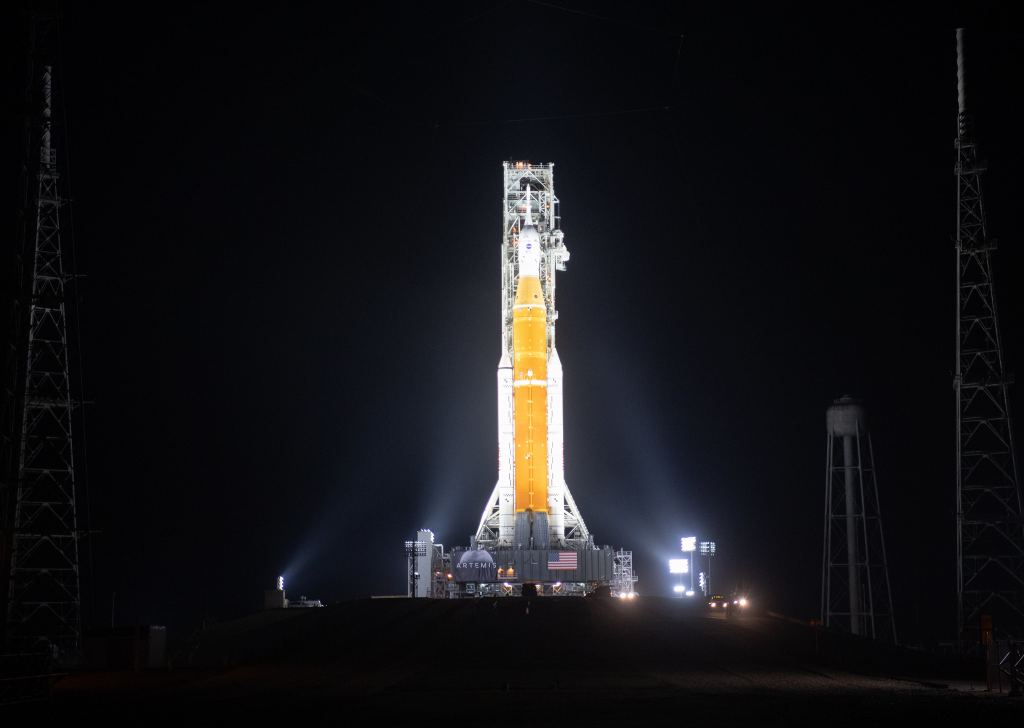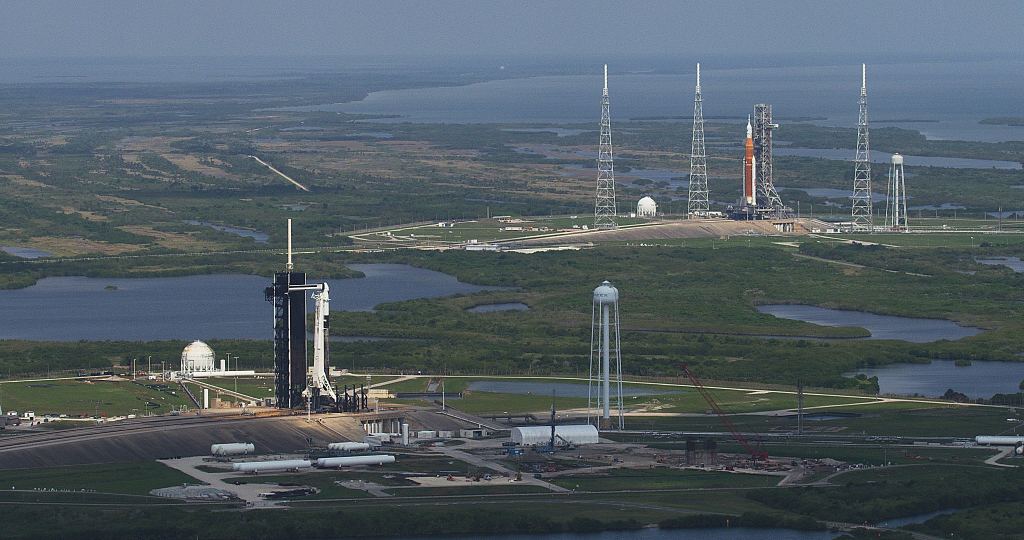Artemis 1 Probably won’t Launch Until August
On March 17th, the Artemis I mission rolled out of the Vehicle Assembly Building (VLB) and was transferred to Launch Complex 39B at the NASA Kennedy Space Center in Florida. This was the first time that a fully-stacked Space Launch System (SLS) and Orion spacecraft were brought to the launchpad in preparation for a “wet dress rehearsal.” To mark the occasion, NASA released a video of the event that featured a new song by Pearl Jam’s Eddie Vedder (“Invincible”).
Unfortunately, technical issues forced ground controllers to scrub the dress rehearsal repeatedly and return the Artemis I to the VLB on April 26th. This was followed by reports that these issues were addressed and that Artemis I rocket would return to LC 39B by early- to mid-June. Meanwhile, an official NASA statement (issued on Thursday, May 8th) says that the official launch of the mission is not likely to take place until August at the earliest.
A “wet dress rehearsal” test consists of the launch team running through operations to load the core and upper stages of the rocket with 2,763,350 liters (730,000 gallons) of cryogenic liquid hydrogen and liquid oxygen (LOX). This is followed by the teams conducting a full launch countdown, recycling the countdown clock, and draining the tanks. The two-day event is the last major hurdle before launch and allows teams to practice the timelines and procedures they will use during the real thing.
Between mid-March and late April, three previous attempts were scrubbed for a variety of issues, most of which had to do with the mobile launcher the Artemis I rocket sits on. There was also a 7.62-cm (3-inch) helium check valve on the interim cryogenic propulsion stage (ICPS) that malfunctioned when a small piece of rubber got caught in it, which could only be repaired in the VLB. NASA said their engineers have already replaced the valve and are trying to determine where the piece of rubber came from.
They also performed leak checks to investigate a hydrogen leak on one of the two tail service mast umbilicals that connect the rocket to the mobile platform and provide propellant and electricity during the launch countdown. The teams also tightened several flange bolts on the liquid hydrogen, LOX, and core stage intertank umbilical (which is believed to have caused the leak). The engineers have also reported that subsequent testing at ambient air temperature has detected no leaks.
Another major issue was the flow of gaseous nitrogen, which is an essential part of the launch pad’s fire suppression system. The French multinational provider of industrial gases and services (Air Liquide) is responsible for supplying this gas to the NASA Kennedy Space Center and is currently upgrading the flow lines to offer increased support and protection to the SLS rocket. In earlier statements, NASA managers said that the Artemis I would be rolled back to the launch pad by early- to mid-June.

On May 8th, NASA Administrator Bill Nelson suggested that August would be the earliest for a launch attempt, which the Exploration Systems Development Mission Directorate (ESDMD) associate administrator Jim Free confirmed. As he stated in an interview with Phys.org’s Richard Tribou:
“As we’ve been saying, we’ll set that official launch date after we get through wet dress. But you know based on some of historical challenges from similar programs over the years and the schedule performance we’ve seen thus far, we are looking at a couple of launch periods through the August time frame.”
While this delay certainly comes across as a grey cloud, a few silver linings can be found inside. For starters, the ability to detect and address issues during testing (especially critical ones) ensures that they don’t arise during launches, where they could prove to be fatal. Second, Nelson also indicated that this delay has not altered the timeline for the Artemis II and III missions, and NASA is still targeting launch windows for May of 2024 and 2025 at the earliest.
Free also indicated that delaying the launch date of Artemis I will allow NASA to conduct more tests, which could include two wet dress rehearsals:
“We are optimistic that we only need one more based on everything we’ve been able to do thus far to fine-tune our tanking procedures, but we also be realistic and up-front with you that it may take more than one attempt to get the procedures where we need them for a smoother launch count that gives us the best chance of making our launch windows when we get to launch day.”

When it launches, Artemis I will send an uncrewed Orion spacecraft on a six to eight-week circumlunar flight (around the Moon) before returning to Earth. The Artemis II mission will send a crew of four on a similar flight in preparation for Artemis III and the long-awaited return to the Moon. This will consist of a four-person crew flying to lunar orbit and two astronauts landing on the surface after rendezvousing with the SpaceX Human Landing System (HLS) (aka. the Lunar Starship) in orbit around the Moon.
Delays are never welcome, but they remind us that space is hard and we must never launch anything haphazardly! While it certainly has slipped from its original date of 2016, Artemis I and the program’s subsequent missions will be happening in the coming years. From that foothold, humanity’s presence on the Moon will grow and (if all goes according to plan) become permanent.
Further Reading: Phys.org, NASA Blogs Artemis
The post Artemis 1 Probably won’t Launch Until August appeared first on Universe Today.
Universe Today
Go to Source